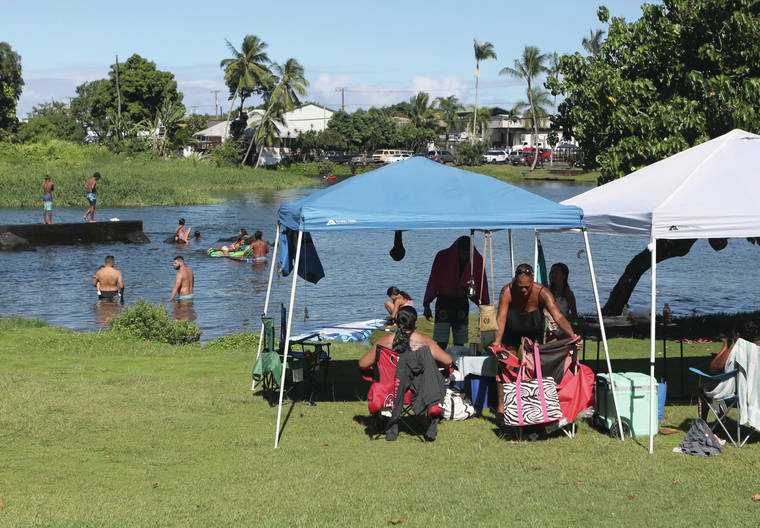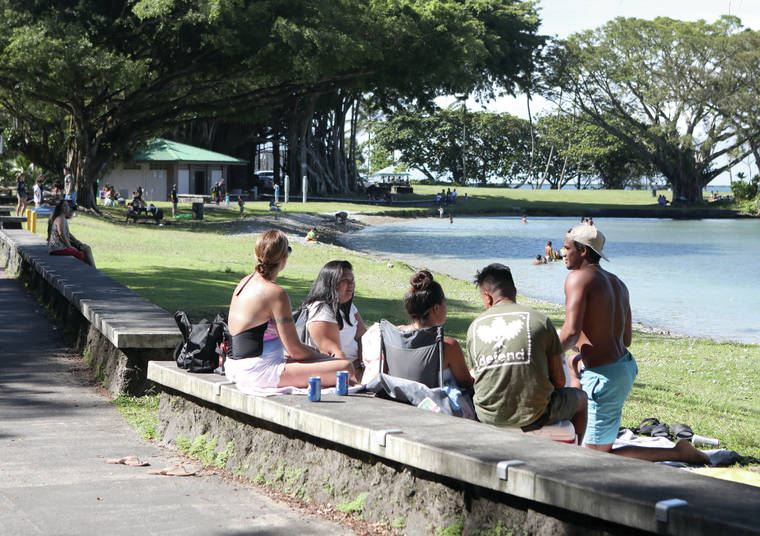Because of the recent surge of COVID-19 cases, Gov. David Ige during a news conference Wednesday said he is proposing Hawaii’s four counties reinstate measures — initially implemented to curb the spread of the virus — that have been relaxed in recent weeks.
That includes limiting social gatherings to 10 or fewer people, re-closing bars, limiting social gatherings on beaches and within parks and re-evaluating guidelines issued for sports activities.
Wednesday’s news conference came hours after the state reported a record-high one-day total of 109 cases of COVID-19 — 98 on Oahu, nine on Maui, and two on Kauai. It is the first time Hawaii’s daily case count has hit triple digits since the pandemic began.
“We continue to be able to manage this infection safely in our communities, but I am very much concerned with what we see happening,” Ige said. “It is a dropping of our vigilance in implementing the mandates that we had to distance and to wear masks. We are seeing infections occurring at personal gatherings of family and friends, and funeral services and other activities, which is alarming, and we must redouble efforts to take personal responsibility and fight against the spread of COVID-19.”
While the concern about the increased number of cases is understandable, Mayor Harry Kim said he is not in favor of reinstating stricter policies at this time.
Kim, who also conducted a news conference Wednesday afternoon, said the county’s approach is “trying to keep things open as best as we can, trying to work with the bars and the restaurants and individuals (about) what they can do and should do to keep our numbers down and under control.”
If, for example, a bar doesn’t comply with county mandates, “we will close the individual facility that is guilty,” as opposed to shuttering the entire industry, he said in a follow-up interview with the Tribune-Herald.
Many people go above and beyond what is required, Kim said. “How unfair is it to punish them?”
As for reducing the number of people allowed to gather, Kim said limiting the number to 10 people makes it easier to enforce, but he noted 10 people can do as much harm as 100.
If churches, for example, are complying with social distancing and other prevention policies, Kim said he sees no reason why gatherings should be restricted to 10.
“However, if you take the same example and someone only has 40 or 50 (people) and (are) not complying with face masks or distancing, then they should be closed down,” he said.
Wednesday’s cases bring the statewide tally to 1,865, a majority of which — 1,516 — are on Oahu. Just 116 cases have been reported on the Big Island.
“The dramatic increase in cases reported today was anticipated based on recent trends since the Fourth of July weekend, which continue,” said state Health Director Bruce Anderson. “We are seeing an increase in small and large social gatherings, including gatherings on beaches and in our parks, at homes and in work places. We have also recently seen an increase in cases associated with bars, gyms and other establishments where physical distancing and masking is not regularly practiced.”
Despite the surge in cases, Hawaii’s health care capacity remains able to handle COVID-19 patients, but Lt. Gov. Josh Green said if the surge continues, an increase in hospitalizations and possible fatalities can be expected.
As of Wednesday, 112 out of 244 intensive care unit beds statewide are in use, 15 of which have COVID-19 patients, while 64 of 459 ventilators in the state are in use, nine of which are being used by coronavirus patients.
Also on Wednesday, 61 individuals with COVID-19 were hospitalized statewide. Since the start of the pandemic, 167 people have been hospitalized.
However, Green said hospitalizations often lag behind daily case counts.
Green said rural communities have less health care capacity. There are far fewer ICU beds and ventilators on the neighbor islands than Oahu, and fewer health care providers.
However, Green said the state hasn’t reached a “critical threshold” in any region.
Reporter John Burnett contributed to this story.
Email Stephanie Salmons at ssalmons at hawaiitribune-herald.com.


